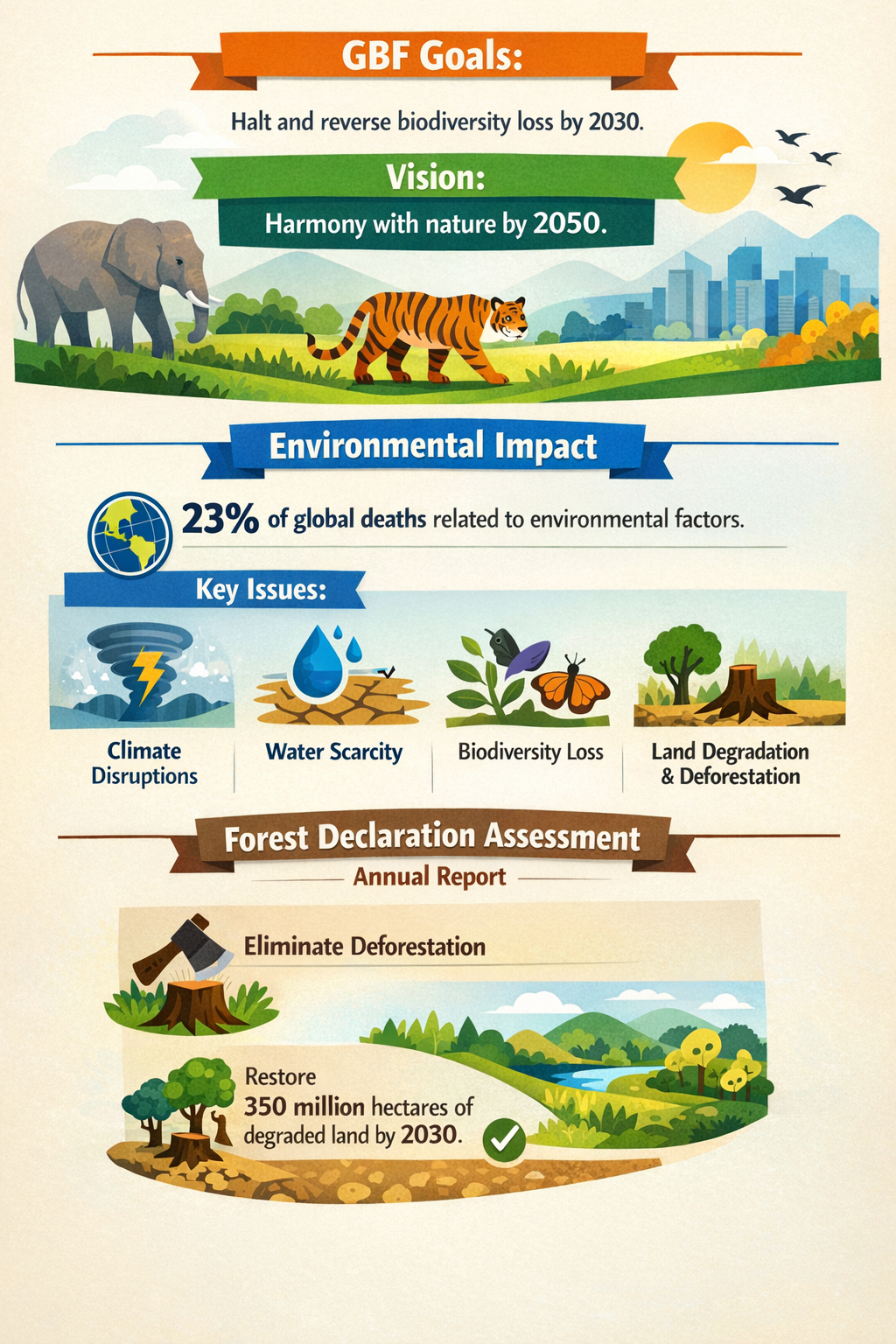Emerging Risk and Opportunity: The Nexus of Deforestation, Smart Farming, and Urban Agriculture by 2030
Deforestation continues to be a critical environmental and economic issue globally, but its interaction with advances in smart farming and urban agriculture reveals an emerging trend that could disrupt traditional industries and reshape food security, environmental management, and economic development. This nexus represents a weak signal gaining momentum that might transform global land use patterns, supply chains, and biodiversity preservation strategies.
Introduction
Rising global attention on halting deforestation by 2030 is converging with innovations in smart and urban farming technologies, creating a complex landscape of change with significant implications. Businesses, governments, and communities engaging with forestry, agriculture, and urban food production may soon confront a transformed set of risks and opportunities shaped by this intersection. This article explores how recent developments around these issues, often treated separately, are coalescing into a potentially disruptive trend with wide-reaching consequences.
What’s Changing?
Deforestation remains a pressing global concern, with international efforts pledged to eliminate illegal forest clearing by 2030. For example, Brazil’s recent 30% reduction in deforestation rates, linked to President Lula’s commitment to end illegal forest loss (DW.com), signals progress but also reveals fragile gains susceptible to policy shifts or enforcement challenges.
At the same time, the global economy continues to rely heavily on “forest-risk commodities” such as timber, cocoa, and cattle, with less than 25% of involved businesses reporting or quantifying deforestation risks (Edie.net). This gap in transparency hinders accountability and risks underestimating financial and environmental exposure.
Significantly, the expansion of smart farming technologies – typically involving data-driven precision agriculture, Internet of Things (IoT) sensors, artificial intelligence (AI), and automation – is reshaping rural land use and agriculture productivity. Alongside this, urban farming innovations, including vertical farming and controlled environment agriculture (CEA), are increasing food production capacity within cities, potentially reducing the pressure to expand agricultural lands into forests (Farmonaut.com).
This emerging convergence might not yet be fully appreciated: the transition toward intensified, technology-enabled food production both on rural land and within urban centers may create a feedback loop with deforestation trends. For instance, successful urban farming could reduce demand for “forest-risk commodities,” thereby easing deforestation pressures. Conversely, poor integration of these technologies or socioeconomic inequities could exacerbate land-use conflicts.
These developments are unfolding alongside global environmental stresses such as biodiversity loss aggravated by heat and habitat destruction (ClimateCosmos.com), reinforcing the urgency for integrated approaches to land and ecosystem management. The international community’s call for combined policies addressing climate change, biodiversity loss, land degradation, and pollution (ABCNews.go.com) further highlights the interconnected nature of these challenges.
Why Is This Important?
The interplay between deforestation, smart farming, and urban food production could redefine economic sectors and regulatory frameworks. For agribusinesses and supply chain managers, potential shifts in commodity sourcing might require novel risk assessments and supplier engagements. The partial transparency on deforestation exposure currently observed could become untenable under growing investor and consumer scrutiny (WINSSolutions.org).
For governments and policymakers, balancing economic development, food security, and environmental preservation will become more complex as urban and rural land use increasingly intersect. The prospects for pollution and biodiversity loss reduction could improve if new agricultural efficiencies reduce the need for forest clearing; however, failure to manage these transitions might exacerbate ecosystem degradation in vulnerable regions such as the Amazon (BBC.com).
Moreover, the health implications of environmental degradation are significant, with approximately 23% of global deaths linked to environmental causes including land degradation and pollution (PMC.ncbi.nlm.nih.gov). Successful integration of smart and urban farming into sustainability agendas could therefore contribute to public health gains by mitigating these risks.
Implications
This emerging trend demands strategies that accommodate technical innovation, environmental stewardship, and socio-economic realities in tandem. Key implications include:
- Industry adaptation: Agribusiness and forestry sectors should integrate smart technology adoption with deforestation risk management to maintain market access and comply with emerging regulatory and investor demands.
- Policy innovation: Governments might develop incentive structures and regulatory frameworks encouraging sustainable urban and rural farming practices that prevent forest degradation while ensuring food security.
- Cross-sector collaboration: Public-private partnerships could promote transparency and drive innovation in tracking forest-risk commodity supply chains enhanced by data from smart farming technologies.
- Environmental monitoring: Enhanced real-time ecosystem monitoring using AI and IoT could improve detection of deforestation activities, potentially integrated with smart farm data to create comprehensive land use dashboards.
- Equity considerations: Inclusive access to smart farming tools and support for urban agriculture in underserved communities could mitigate risk of disproportionate impacts or exacerbated inequalities.
These points suggest that the evolution at the nexus of deforestation and technology-driven food production may alter investment, operational, and governance models significantly by 2030.
Questions
- How can businesses better integrate deforestation risk quantification with the adoption of smart farming technologies throughout their supply chains?
- In what ways might urban agriculture scale sufficiently to meaningfully reduce pressures on traditional forest-risk commodity production?
- What policy instruments or market mechanisms could effectively incentivize transparent reporting and sustainable sourcing among companies dependent on forest-risk commodities?
- How might environmental monitoring technologies converge to provide comprehensive, real-time insights on land use changes linking agriculture and deforestation?
- What strategies could ensure equitable access to smart farming and urban agriculture innovations, preventing widened socio-economic disparities?
Keywords
deforestation; smart farming; urban agriculture; forest-risk commodities; biodiversity loss; supply chain transparency; climate policy; environmental monitoring
Bibliography
- Brazil slows deforestation, boosts oil production, COP30 climate summit – DW.com. https://www.dw.com/en/brazil-slows-deforestation-boosts-oil-production-cop30-climate-summit-belem/video-74696524
- Forest risks agenda fights and powering past coal: What happened at COP30 – Edie.net. https://www.edie.net/forest-risks-agenda-fights-and-powering-past-coal-what-happened-at-cop30-on-17-november/
- 10 Advantages of Deforestation, Smart & Urban Farming – Farmonaut.com. https://farmonaut.com/blogs/10-advantages-of-deforestation-smart-urban-farming
- Climate News Highlights December 7-13, 2025: From Record Heat to Policy Clashes – ClimateCosmos.com. https://climatecosmos.com/climate-news/climate-news-highlights-december-7-13-2025-from-record-heat-to-policy-clashes/
- World needs a new approach to environmental crises: Climate change, biodiversity loss, and pollution - ABC News. https://abcnews.go.com/Business/wireStory/world-jointly-tackle-issues-climate-change-pollution-biodiversity-128232705
- Belem Investor Statement on Rainforests – WINSSolutions.org. https://www.winssolutions.org/sustainability-news-october-16-26-2025/
- The Amazon rainforest faces renewed deforestation risks – BBC.com. https://www.bbc.com/news/articles/c1d0vekq12ro?at_medium=RSS&at_campaign=rss
- Global deaths related to environment and health impacts – PMC.ncbi.nlm.nih.gov. https://pmc.ncbi.nlm.nih.gov/articles/PMC8327543/

